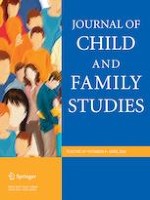07-12-2019 | Original Paper
Link between Inattentive, Hyperactive/Impulsive, and Disorganized Behaviors and Peer Disliking Analyzed with Quadratic Assignment Procedure
Gepubliceerd in: Journal of Child and Family Studies | Uitgave 4/2020
Log in om toegang te krijgenAbstract
Objectives
Research has demonstrated that inattentive and hyperactive/impulsive behaviors are associated with peer rejection. Adding to prior research, which has relied on third-party raters or used aggregated peer nominations, we used Quadratic Assignment Procedure (QAP) correlations and logistic regressions (LRQAP) to examine concordance in peer nomination patterns, controlling for gender homophily between nominator/nominee. We also explored if classroom behavioral norms helped explain in which classrooms LRQAP models were significant.
Methods
Participants (387 fourth and fifth graders from 21 general education classrooms) nominated classmates for three problem behaviors (i.e., inattention, disorganization, and hyperactivity/impulsivity) and as liked-most and liked-least. Teachers also rated each participating student on two scales—distractible and organized; classroom means were used to characterize the behavioral norms in each classroom.
Results
In QAP correlations, nominations for at least one problem behavior were significantly tied with dislike in 81% of classrooms (e.g., child nominated the peer as both inattentive and as liked-least), with inattention the most consistent predictor. Gender homophily had a significant, positive relation to dislike in LRQAP models for 43% of classrooms, but results were largely unchanged. Chi-square analyses of teacher ratings indicated that perceived inattention was more often tied to disliking in classrooms with low and moderate levels of distractibility than high distractibility. Variability of the LRQAP results was otherwise unrelated to classroom norms and grade level.
Conclusions
Children who perceived peers as inattentive or hyperactive/impulsive also reported disliking those same peers in the majority of classrooms suggesting a targeted dislike in response to these behaviors.
